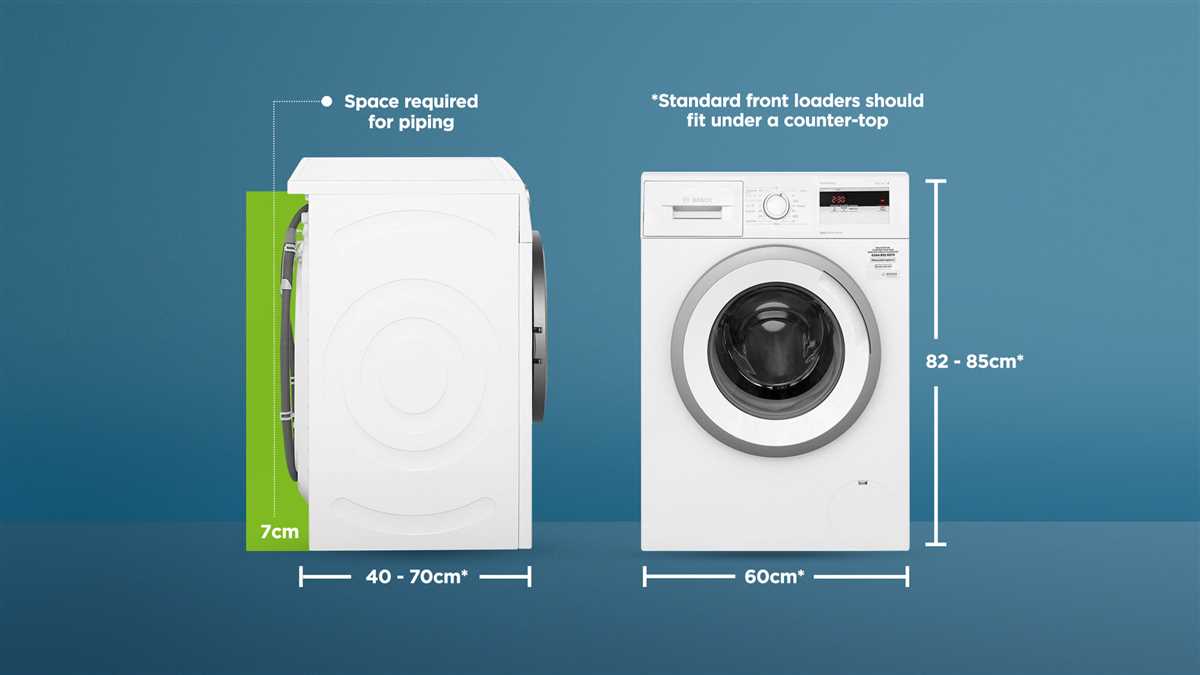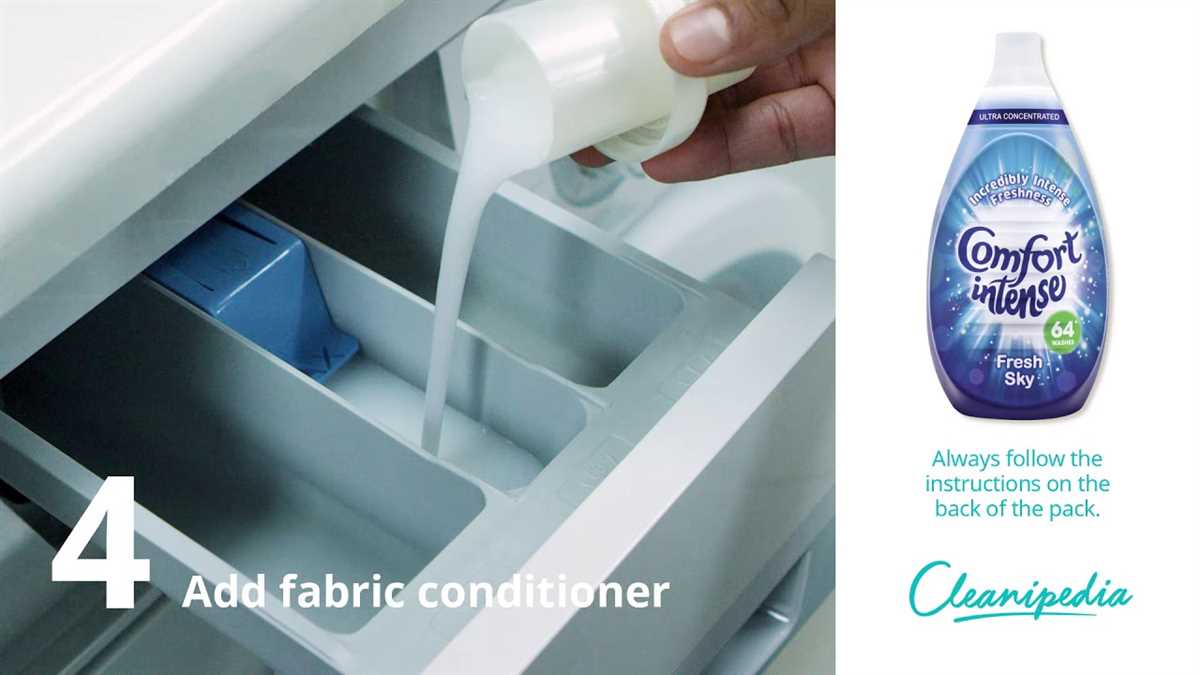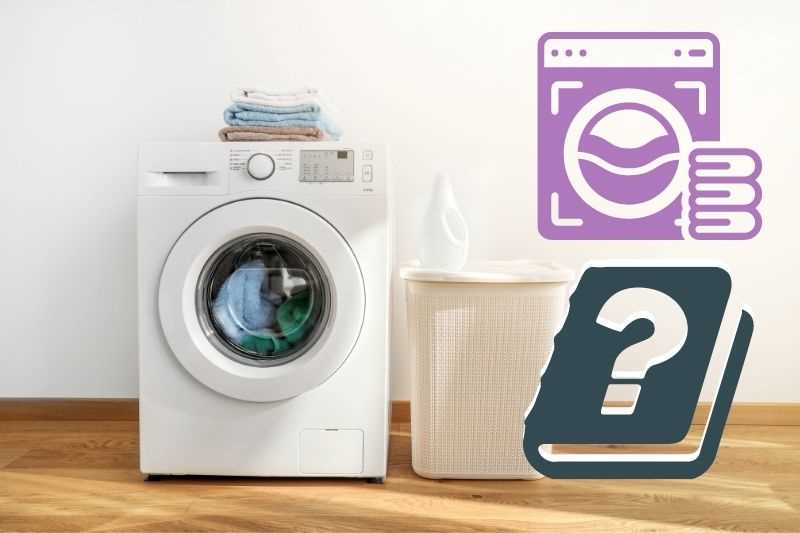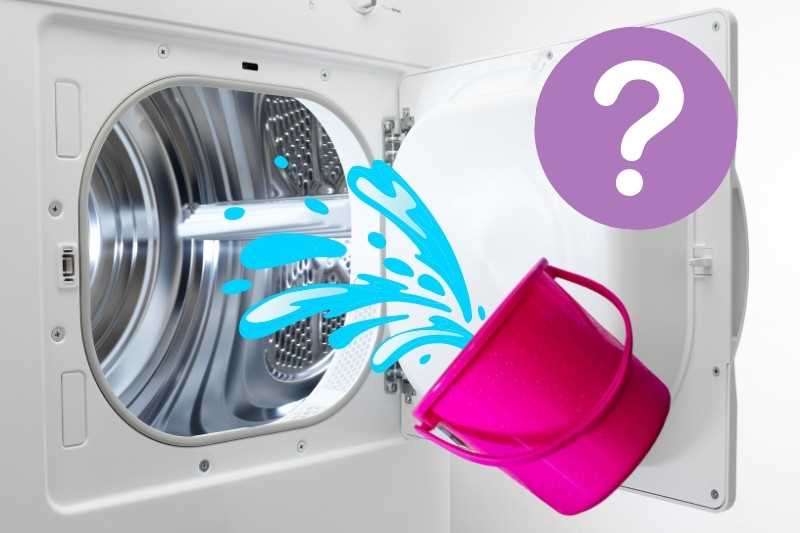
Welcome to the ultimate guide on how to use a washing machine! In this comprehensive guide, we will walk you through the step-by-step process of operating a front-loader washing machine in the United Kingdom.
Washing machines are essential appliances in every household, simplifying the task of doing laundry. Front-loading washing machines are popular in the UK due to their energy efficiency, water-saving features, and superior cleaning performance. Whether you’re a first-time user or need a refresher on the proper usage, this guide will equip you with the necessary knowledge to make the most of your front-loader washing machine.
Before we dive into the details, it’s important to note that different washing machine models may have unique features and controls. Therefore, we recommend consulting the user manual specific to your machine for detailed instructions. However, the general principles and steps outlined in this guide should apply to most front-loader washing machines in the UK.
To begin, let’s discuss the essential preparations before you start a wash cycle:
1. Sort your laundry: Separate your clothes based on their colours, fabric types, and washing instructions. This will help prevent colour bleeding, damage, and ensure the best cleaning results.
2. Pre-treat stains: Check your clothes for any stains and pre-treat them accordingly. Follow the instructions on the stain remover product for the best results.
3. Empty pockets: Make sure to remove any items from your pockets, such as coins, keys, or tissues, to prevent damage to your clothes or the washing machine.
4. Measure detergent: Read the detergent packaging for the recommended amount and measure accordingly. Using too little or too much detergent can affect the cleanliness of your clothes and the performance of the machine.
How to Use a Washing Machine: Ultimate Guide for UK Front-Loader Usage

1. Sort your laundry
Before loading your washing machine, it’s important to sort your laundry. Separate dark and light-colored clothes, and sort them according to the fabric type or washing temperature requirements.
2. Measure the detergent
Check the detergent packaging for the recommended amount to use based on the load size and level of dirtiness. Use a measuring cup or the cap provided with the detergent to ensure accurate measurement.
3. Load the washing machine
Open the front-loading door of the washing machine and place your sorted laundry inside. Do not overload the machine as it may affect the washing performance and cause excessive wear on the clothes.
4. Select the desired program

Choose the appropriate washing program on the washing machine’s control panel. You can refer to the instruction manual for the recommended program settings based on the type of fabric and soiling level of your laundry.
5. Adjust the settings (optional)
If desired, you can adjust additional settings such as the temperature, spin speed, or pre-wash cycle. However, be mindful of the fabric care labels and the manufacturer’s instructions to avoid damaging the clothes.
6. Start the washing cycle
Once you have chosen the desired program and adjusted any optional settings, close the washing machine door and press the start button. The washing machine will begin the selected washing cycle.
7. Wait for the cycle to complete

Allow the washing machine to complete the cycle. Some washing machines have an indicator that shows the remaining time. Avoid opening the door during the cycle, as it can affect the washing performance and safety.
8. Remove the laundry
Once the cycle is completed, open the door and carefully remove the clean laundry from the washing machine. Shake out any excess water and transfer the clothes to a drying rack or tumble dryer, if necessary.
9. Clean the washing machine

Regularly clean the washing machine to maintain its performance. Wipe down the door seal, detergent drawer, and drum, and run an empty cycle with a washing machine cleaner to remove any built-up residue or odours.
10. Follow fabric care instructions
Always refer to the fabric care labels on your clothes for specific washing instructions. Some items may require handwashing or delicate cycles, while others may be suitable for higher temperatures and more robust washing programs.
- Sort your laundry
- Measure the detergent
- Load the washing machine
- Select the desired program
- Adjust the settings (optional)
- Start the washing cycle
- Wait for the cycle to complete
- Remove the laundry
- Clean the washing machine
- Follow fabric care instructions
Preparing Your Clothes
Before you start using your washing machine, it’s important to properly prepare your clothes. This will ensure that they are cleaned effectively and avoid any damage to the machine or your garments.
Sort your clothes
Begin by sorting your clothes into different piles based on their colours and fabric types. Sorting your clothes helps prevent colour bleeding and damage caused by different materials rubbing against each other during the wash cycle. Here are some general guidelines for sorting:
- Separate light-coloured clothing from dark-coloured clothing.
- Delicate fabrics such as silk, lace, or wool should be separated from sturdier fabrics like denim or cotton.
- Washing heavily soiled items separately can prevent dirt from transferring to other clothes.
Check the garment labels

Always check the care labels on your clothes before washing them. The labels provide specific instructions on how to care for the garment, including temperature settings, washing cycles, and any special precautions to take. Follow these instructions to ensure that your clothes are washed properly without causing any damage.
Empty pockets and remove accessories
Before putting your clothes in the washing machine, make sure to empty all pockets of any items, such as coins, tissues, or keys. These can cause damage to both your clothes and the washing machine. Additionally, remove any accessories, like belts or removable straps, as they can get tangled during the wash cycle.
Treat stains
If you have any stained garments, it’s a good idea to pre-treat the stains before washing. Follow the instructions on the stain remover product and apply it directly to the affected areas. Allow the stain remover to sit for the recommended time before adding the stained garment to the washing machine.
Close zippers and fasten buttons
Before placing your clothes in the washing machine, remember to close all zippers, buttons, and any other fastenings. This will prevent them from snagging on other garments or causing damage to the washing machine.
Tie strings and secure bra clasps

If you have clothes with strings or bra clasps, it’s important to tie or secure them before washing. Untied strings can get tangled, and loose bra clasps can snag on other garments, causing damage. Taking a moment to secure these items will help protect your clothes and extend their lifespan.
Shake out your clothes

Prior to placing your clothes in the washing machine, give them a gentle shake to remove any loose dirt or debris. This step helps reduce the chances of dirt particles spreading to other garments during the wash cycle.
By following these steps to prepare your clothes, you’ll set yourself up for a successful and efficient washing machine experience. Your clothes will come out cleaner, and you’ll avoid any unnecessary damage to your garments or the machine.
Loading the Washing Machine
Step 1: Sort your laundry
Before loading the washing machine, it’s important to sort your laundry into different piles. Separate your whites, colors, and delicates. This will prevent color bleeding and help you select the appropriate wash cycle.
Step 2: Check the care labels
Take a look at the care labels on your clothes. They will provide information on the recommended washing temperature, cycle, and any specific instructions or precautions you need to follow.
Step 3: Prepare the machine

Open the door of the washing machine and check for any items left behind from the previous wash. Remove any stray objects, such as coins or tissues. Ensure that the detergent drawer is clean and free of any residue.
Step 4: Load the clothes
Place your sorted laundry into the washing machine drum. Avoid overloading the machine as this can affect the washing performance and potentially damage your clothes. Follow the manufacturer’s guidelines for the maximum load capacity.
Step 5: Add detergent
Measure the appropriate amount of detergent according to the instructions on the packaging. You can use either liquid or powder detergent, depending on your preference. Pour the detergent into the designated detergent drawer or in a dosing ball and place it on top of the clothes.
Step 6: Select the wash cycle and settings

Choose the desired wash cycle and settings on the washing machine’s control panel. The available options may include temperature, spin speed, and additional features like pre-wash or extra rinse. Refer to the machine’s manual for more information on the different cycles and settings.
Step 7: Close the door and start the machine
After confirming that everything is properly set, close the door of the washing machine. Press the start button or select the appropriate program to start the wash cycle. Sit back and let the machine do its job!
Once the washing cycle is complete, you can remove your clean clothes from the machine and hang them up to dry or transfer them to a tumble dryer if applicable.
Selecting the Right Washing Program
When using a front-loader washing machine in the UK, it is essential to select the right washing program to ensure that your clothes are cleaned effectively and efficiently. The washing programs on a front-loader machine are designed to cater to different types of fabrics and levels of soiling. Here are some guidelines to help you select the right washing program:
1. Read the Labels
Before you start, always check the care labels on your clothes to determine the proper washing instructions. The label will provide information about the recommended water temperature, spin speed, and washing program.
2. Sort Your Laundry
Sort your laundry based on fabric type, color, and level of dirtiness. Washing different fabrics together may result in damage or discoloration. Sorting will help you choose the appropriate washing program.
3. Choose the Right Program
Front-loader machines offer a range of washing programs suited for different needs. Common programs include:
- Cottons: This program is suitable for washing cotton items, such as bed sheets, towels, and t-shirts. It provides a longer wash cycle with higher temperatures for optimal cleaning.
- Synthetics: Use this program for synthetic fabrics like polyester or nylon. It uses lower temperatures and gentler agitation to protect the delicate fibers.
- Delicates: If you have delicate items like silk or lace, use the delicates program. It uses cold water and a slow spin to prevent damage.
- Quick Wash: When you need to wash a small load of lightly soiled items, the quick wash program offers a shorter cycle with reduced water consumption.
4. Adjust Temperature and Spin Speed
Depending on the program you choose, you might need to adjust the temperature and spin speed. Higher temperatures are suitable for heavily soiled items, while lower temperatures are ideal for delicate fabrics. The spin speed determines the moisture level left in the clothes after the cycle.
5. Follow the Manufacturer’s Instructions
Always consult your washing machine’s user manual for specific instructions on selecting and customizing washing programs. Manufacturers often provide recommendations for optimal program settings.
By following these guidelines and selecting the right washing program, you can ensure that your clothes are clean and well-maintained, while also extending the lifespan of your garments.
Using Detergent and Fabric Softener
Properly using detergent and fabric softener in your washing machine is essential to achieve clean and fresh-smelling laundry. Here are some tips on how to use them effectively:
1. Choosing the Right Detergent
Make sure to check the clothing label for any specific detergent recommendations. For general use, most front-load washing machines work well with liquid or powder detergent.
High-efficiency (HE) washing machines require HE detergent, which is specially formulated to produce less suds and provide optimal cleaning in low water levels. Always check if the detergent is suitable for HE machines before using it.
2. Measuring the Detergent
Follow the manufacturer’s instructions on the detergent packaging for proper dosage. Using too little detergent may result in poorly cleaned clothes, while using too much can cause excess suds and decrease machine performance.
For liquid detergent, use the dispenser drawer if available. Otherwise, pour the recommended amount directly into the drum before adding the clothes.
If using powder detergent, dissolve it in a small amount of water before adding it to the machine. This helps prevent the powder from clumping and ensures it is evenly distributed.
3. Adding Fabric Softener
Fabric softener helps soften and freshen laundry while reducing static cling. However, not all fabrics and garments are suitable for fabric softener.
Check the clothing label to see if fabric softener is recommended. Some fabrics, like towels or athletic wear, may lose their absorbency or moisture-wicking properties when treated with fabric softener.
If using liquid fabric softener, add it to the dedicated fabric softener compartment in the dispenser drawer. If your washing machine does not have a dispenser, wait for the final rinse cycle and manually pour the fabric softener into the drum.
4. Dosing Fabric Softener
Follow the manufacturer’s instructions for the recommended dosage of fabric softener. Using too much can leave a residue on your clothes, while using too little may not provide the desired softness.
Make sure to dilute the fabric softener with water as instructed to prevent it from directly contacting the clothes, especially in machines without a dedicated dispenser.
By following these tips, you can achieve optimal cleaning and keep your clothes looking and smelling fresh.
Starting the Washing Machine and Post-Wash Care
1. Loading the Washing Machine
Before starting the washing machine, make sure to properly load the clothes. Follow these steps:
- Sort the clothes based on their colours and the fabric type.
- Empty the pockets and remove any loose items, such as coins or keys.
- Open the washing machine door and place the clothes inside, making sure not to overload the machine.
- Spread the clothes evenly to ensure balanced washing.
- Close the door securely.
2. Selecting the Wash Cycle

Once the washing machine is loaded, follow these steps to select the appropriate wash cycle:
- Turn on the washing machine.
- Refer to the manufacturer’s instructions or the control panel to select the desired wash cycle. Common options include “Normal,” “Delicate,” “Heavy Duty,” and “Quick Wash.”
- Adjust the temperature and spin speed settings according to the requirements of the clothes being washed.
- If necessary, add detergent and fabric conditioner to the designated compartments.
- Close any detergent compartment lids.
3. Starting the Wash Cycle
Once the wash cycle is selected, you can start the washing machine by following these steps:
- Press the start button or turn the dial to start the wash cycle.
- Ensure that the door is tightly closed.
- Leave the washing machine to complete the selected wash cycle.
- Do not interrupt the wash cycle unless absolutely necessary.
4. Post-Wash Care
After the wash cycle is complete, it is important to take care of the following tasks:
- Turn off the washing machine and unplug it from the power source.
- Open the washing machine door and carefully remove the clothes.
- Inspect the clothes for any stains or damage. Treat stains as necessary before drying.
- Clean the washing machine drum and door seal to remove any dirt or residue.
- Leave the washing machine door open to allow air circulation and prevent the growth of mold or odors.
- Store detergent and other laundry supplies in a cool, dry place.
By following these steps and practicing proper post-wash care, you can ensure that your washing machine operates efficiently and your clothes are clean and well-maintained.
FAQ
What is the ideal amount of laundry to put in a front-loader washing machine?
The ideal amount of laundry to put in a front-loader washing machine depends on the capacity of the machine. It is generally recommended to fill the machine to about 80% of its total capacity to ensure proper cleaning and efficient water usage. Overloading the machine can lead to poor cleaning results and potential damage to the machine.
Should I use hot or cold water for my laundry?
The water temperature you should use for your laundry depends on the type of clothes and the level of dirt or stains. In general, cold water is suitable for delicate fabrics and dark-colored clothes to prevent color fading and shrinkage. Hot water, on the other hand, is more effective in removing heavy stains and dirt from white or heavily soiled garments. Consult the care labels on your clothes for more specific instructions.
How often should I clean my front-loader washing machine?
It is recommended to clean your front-loader washing machine every month to keep it in good working condition and prevent build-up of dirt, detergent residue, and unpleasant odors. Cleaning tasks may include wiping down the drum and door seal, cleaning the detergent drawer, and running an empty cycle with a washing machine cleaner. Regular maintenance will help prolong the lifespan of your machine and ensure clean and fresh-smelling laundry.













